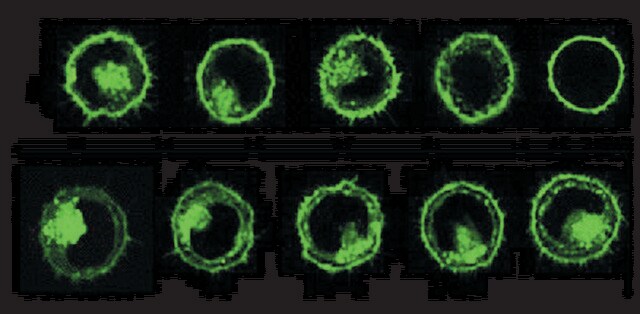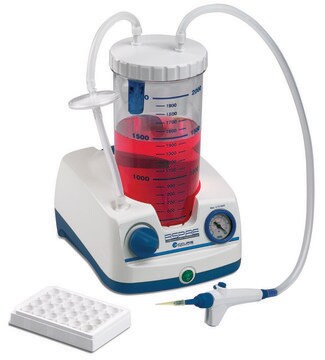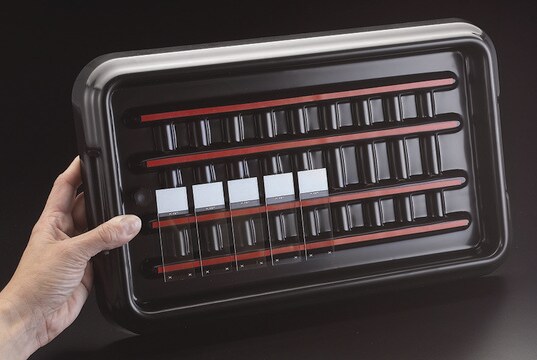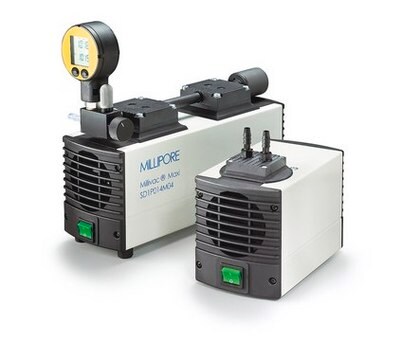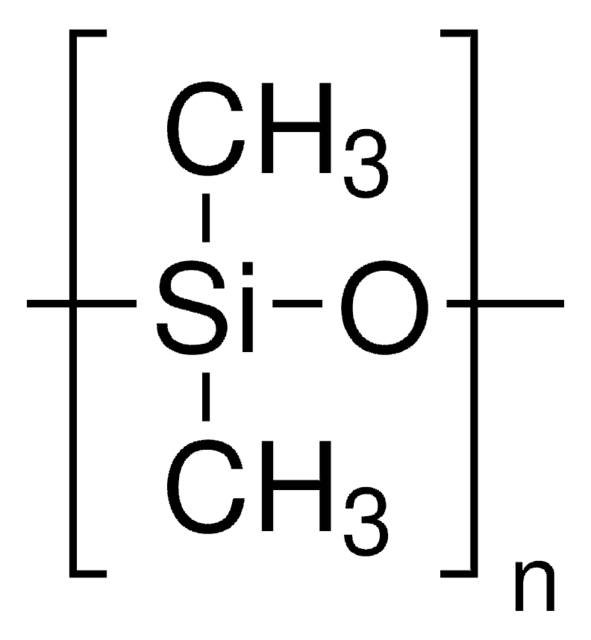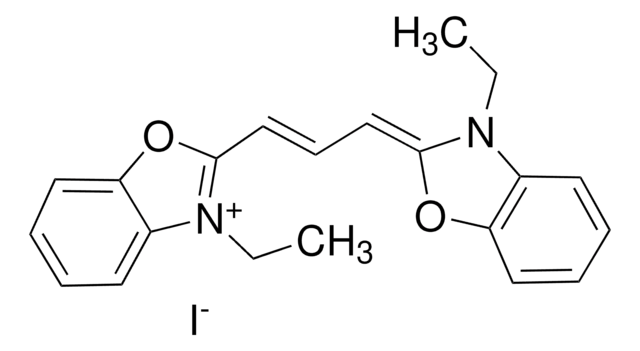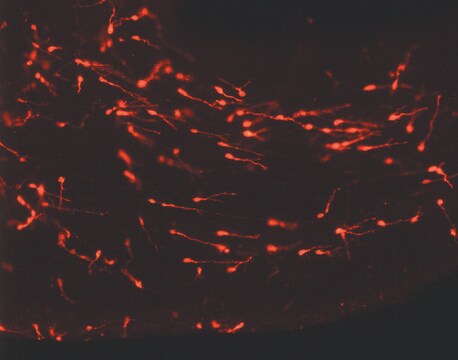42364
1,1′-Dioctadecyl-3,3,3′,3′-tetramethylindocarbocyanine perchlorate
BioReagent, suitable for fluorescence, ≥98.0% (TLC)
Sinônimo(s):
DiI
About This Item
Produtos recomendados
linha de produto
BioReagent
Nível de qualidade
Ensaio
≥98.0% (TLC)
pf
68 °C (dec.) (lit.)
solubilidade
DMF: soluble
DMSO: soluble
methanol: soluble
fluorescência
λex 550 nm; λem 567 nm in phosphate buffer/SDS pH 7.0
adequação
suitable for fluorescence
cadeia de caracteres SMILES
[O-]Cl(=O)(=O)=O.CCCCCCCCCCCCCCCCCCN1c2ccccc2C(C)(C)/C1=C\C=C\C3=[N+](CCCCCCCCCCCCCCCCCC)c4ccccc4C3(C)C
InChI
1S/C59H97N2.ClHO4/c1-7-9-11-13-15-17-19-21-23-25-27-29-31-33-35-41-50-60-54-46-39-37-44-52(54)58(3,4)56(60)48-43-49-57-59(5,6)53-45-38-40-47-55(53)61(57)51-42-36-34-32-30-28-26-24-22-20-18-16-14-12-10-8-2;2-1(3,4)5/h37-40,43-49H,7-36,41-42,50-51H2,1-6H3;(H,2,3,4,5)/q+1;/p-1
chave InChI
JVXZRNYCRFIEGV-UHFFFAOYSA-M
Procurando produtos similares? Visita Guia de comparação de produtos
Descrição geral
Aplicação
- Preparation of Dil solution
- fluorescent membrane dye
- Di-I Staining
Ações bioquímicas/fisiológicas
Outras notas
Não está encontrando o produto certo?
Experimente o nosso Ferramenta de seleção de produtos.
Código de classe de armazenamento
11 - Combustible Solids
Classe de risco de água (WGK)
WGK 3
Ponto de fulgor (°F)
Not applicable
Ponto de fulgor (°C)
Not applicable
Equipamento de proteção individual
Eyeshields, Gloves, type N95 (US)
Escolha uma das versões mais recentes:
Já possui este produto?
Encontre a documentação dos produtos que você adquiriu recentemente na biblioteca de documentos.
Os clientes também visualizaram
Nossa equipe de cientistas tem experiência em todas as áreas de pesquisa, incluindo Life Sciences, ciência de materiais, síntese química, cromatografia, química analítica e muitas outras.
Entre em contato com a assistência técnica



